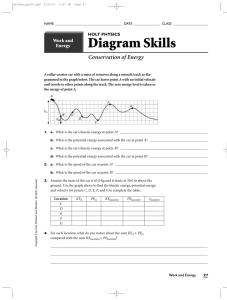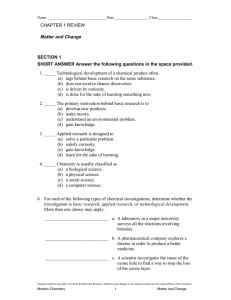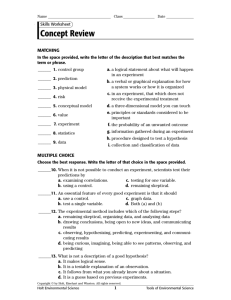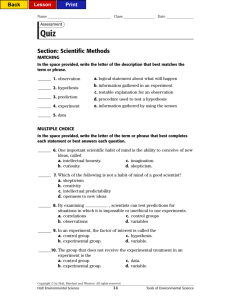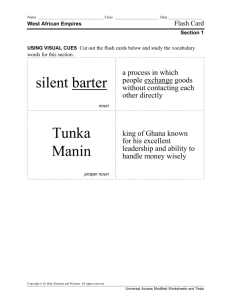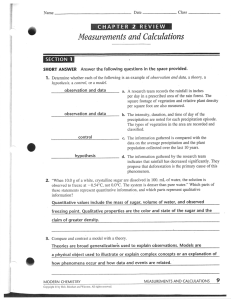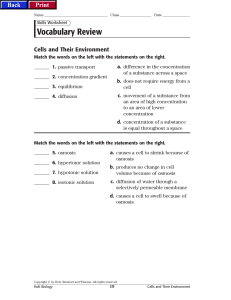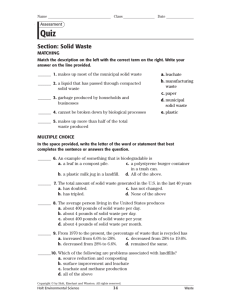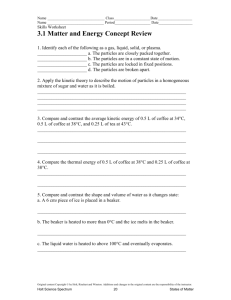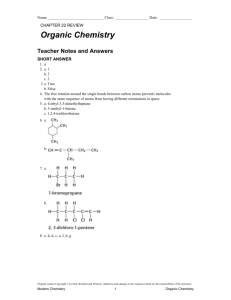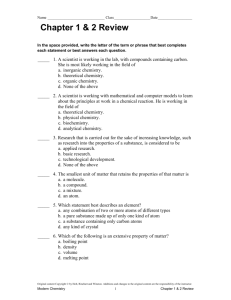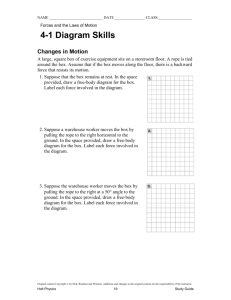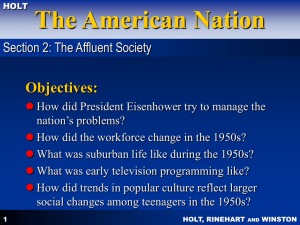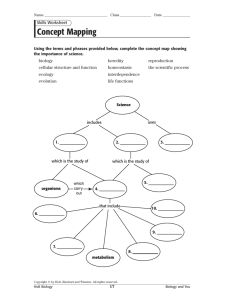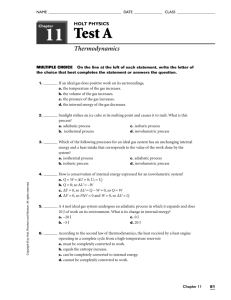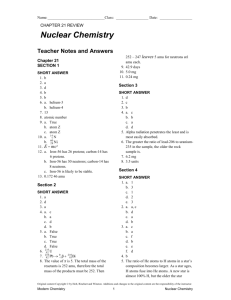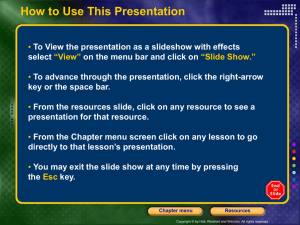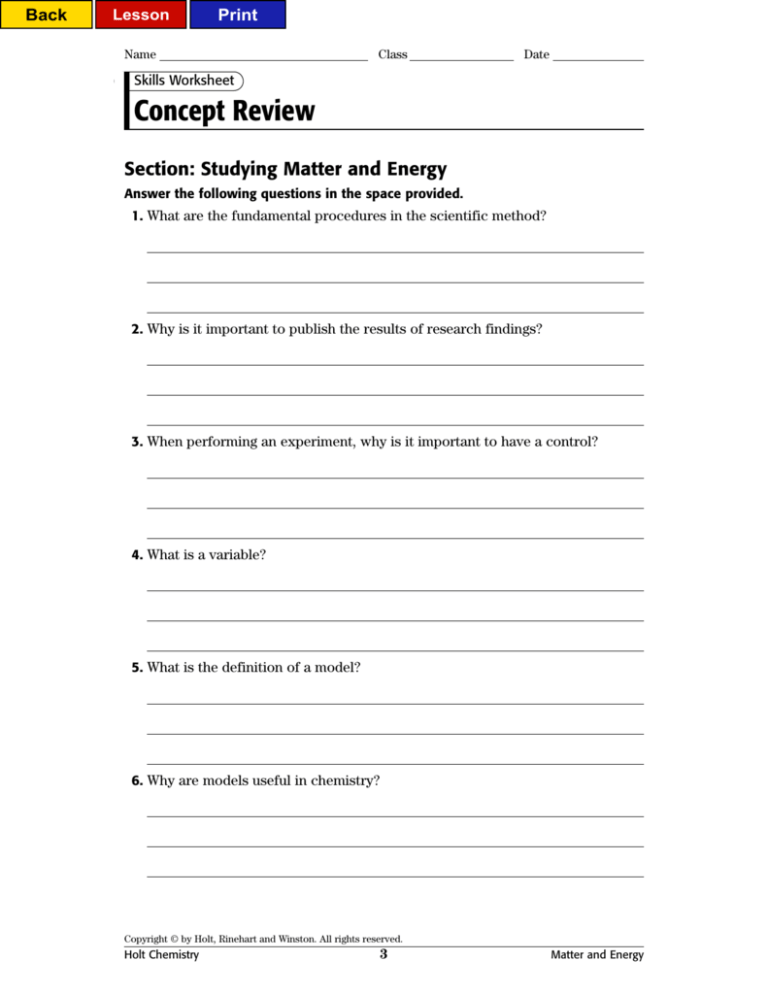
Back
Lesson
Print
Name
Class
Date
Skills Worksheet
Concept Review
Section: Studying Matter and Energy
Answer the following questions in the space provided.
1. What are the fundamental procedures in the scientific method?
2. Why is it important to publish the results of research findings?
3. When performing an experiment, why is it important to have a control?
4. What is a variable?
5. What is the definition of a model?
6. Why are models useful in chemistry?
Copyright © by Holt, Rinehart and Winston. All rights reserved.
Holt Chemistry
3
Matter and Energy
Back
Lesson
Print
Name
Class
Date
Concept Review continued
In the space provided at the left of each word or phrase, write the letter of the
expression on the right that is most closely related.
______ 7. hypothesis
a. a well-tested explanation for a phenomenon
based on observation, experimentation, and
reasoning
______ 8. theory
b. a reasonable and testable explanation of
observations
______ 9. scientific law
c. The products of a chemical reaction have the
same mass as the reactants.
______10. law of
conservation
of mass
d. a description of the natural world that has been
proven reliable over time
Copyright © by Holt, Rinehart and Winston. All rights reserved.
Holt Chemistry
4
Matter and Energy
Back
Lesson
Print
TEACHER RESOURCE PAGE
Answer Key
Concept Review: Energy
1.
2.
3.
4.
5.
6.
7.
8.
9.
10.
11.
12.
13.
14.
energy
physical
chemical
endothermic
exothermic
kinetic
transferred
In any chemical or physical change,
the total quantity of energy remains
constant. Energy cannot be created or
destroyed.
Heat is the enegy transferred between
objects that are at different temperatures.
Temperature is a measure of how hot
or cold something is; specifically, a
measure of the average kinetic energy
of the particles in a sample of matter.
Heat is the energy transferred between
objects that are at different temperatures, and temperature is the measurement of the average kinetic energy of
the particles in a sample of matter.
a. 373.15 K
b. 20°C
c. 328.15 K
d. 185.85°C
e. 270.15°C
f. 234.15 K
Specific heat is the amount of heat
required to raise the temperature of
1 g of a substance by 1 K.
Substance B will have the higher temperature. Each gram of substance B
requires half as much energy to raise
its temperature as does substance A.
3.
4.
5.
6.
7.
8.
9.
10.
findings to be accepted as valid. The
results must be verifiable.
A scientist must know for certain that
the variable is in fact causing the
result to occur and that it would not
have happened if the variable had not
been changed.
A variable is any aspect of an experiment that can be changed to affect the
outcome of the experiment.
A model is a simplified representation
of an object, a system, a process, or an
idea.
Models are used to represent abstract
ideas. A model gives scientists a visual
aid so that they may test or envision a
smaller or larger-scaled replica of the
actual item.
b
a
d
c
Concept Review:
Measurements and
Calculations in Chemistry
1. Accuracy is the extent to which a
measurement approaches the true
value of a quantity; precision is the
extent to which a series of measurements of the same quantity made in
the same way agree with one another.
2. Answers may vary. Look at the
defense of the answer.
3. a. 7
b. unlimited
c. 3
d. 10
e. 1
f. 10
g. 1
h. 7
i. 10
j. unlimited
4. These values are not measured; they
are counted. They are not subject to
measuring inaccuracies. They are
exact.
Concept Review: Studying
Matter and Energy
1. observing, formulating hypotheses,
testing hypotheses, analyzing results,
drawing conclusions, publishing
results
2. The research findings of any experiment or investigation must be reproducible by other scientists for those
Copyright © by Holt, Rinehart and Winston. All rights reserved.
Holt Chemistry
109
Matter and Energy


